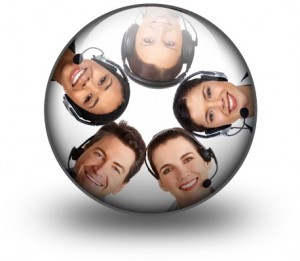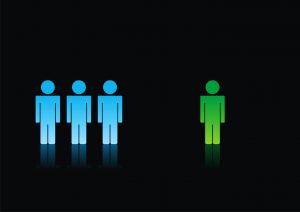Customer sentiment: How to deal with angry customers
“To listen closely and reply well is the highest perfection we are able to attain in the art of conversation.”
~ Francois de La Rochefoucauld
 Every business wants to know the minds of their customers. But when your customers speak their minds, do you know how to listen? There are several layers of listening to your client feedback. You can focus on just what’s being said or you can pay attention to the sentiment of what’s being said – the emotions, the undisclosed assumptions, the unvoiced desires. The latter is more difficult to do, but careful tuning into customer sentiment can be the key to improving customer service.
Every business wants to know the minds of their customers. But when your customers speak their minds, do you know how to listen? There are several layers of listening to your client feedback. You can focus on just what’s being said or you can pay attention to the sentiment of what’s being said – the emotions, the undisclosed assumptions, the unvoiced desires. The latter is more difficult to do, but careful tuning into customer sentiment can be the key to improving customer service.
A recent study on customer conflict, for example, revealed two fundamental behavior patterns of angry customers. Some anger is transactional, or task-based, in nature. For instance, you go to a grocery store, buy a bag of potatoes, bring it home, and open it only to discover that several potatoes are rotten. You may get angry, but it’s unlikely that you treat this incident as a personal affront. If you go back, complain and get a new bag of good potatoes, you will probably be quite satisfied with the resolution of your complaint. The study confirmed that transactional anger can be diminished by compensating the customer for the poor service.
There is, however, another anger pattern among customers. That’s when they take the situation personally. The study revealed that these angry customers often thought that they had been misled by the company’s marketing messages and felt betrayed. Such consumers interviewed in the study used highly emotive language to describe the service provider, including ‘hatred’ and ‘vengeance’. In such situations, it’s not enough for the customer service to compensate the customer for the bad experience. In fact, offering to exchange the defective product or refund the money may lead to more angry outbursts. Instead, customers want an acceptance of responsibility and a personal apology. Perhaps, they want their customer representatives feel their frustration, connect to the source of their pain, and empathize with them.
This makes sense from the brain’s perspective because the second pattern likely triggers the brain’s preference for fairness. Fair treatment is a reward to the brain that activates dopamine cells while unfair treatment is perceived as a threat and processed in the anterior insula, the part of the brain also associated with the feeling of contempt [PDF] The perception of unfairness can lead to emotional and sometimes even violent outbursts.
According to Golnaz Tabibnia, an Assistant Professor in Social and Decision Sciences at Carnegie Melon University, fairness may be even more important to us than money as the ultimatum game experiments demonstrate. In the ultimatum game experiments, two people need to split a pot of money. One person makes an offer, and the other person needs to decide whether to accept or reject it. If the offer is rejected, nobody gets any money. It turns out that people are willing to sacrifice their personal gain if they think that the offer unfairly benefits the other person. When the offer is fair, the reward system in the brain becomes more active than when it’s unfair. Other studies show that people report higher levels of trust and cooperation when they experience fair exchanges. Interestingly, the sense of fairness increases the levels of dopamine, serotonin and oxytocin, making people more open and willing to connect with others.
In summary, businesses that want to nurture customer loyalty should pay attention to the perceptions of fairness when listening to customer sentiment and analyzing conversation patterns. Strong emotive language may indicate that customers take the conflict personally as a breach of trust and seek justice and empathy, rather than refunds and compensation.

